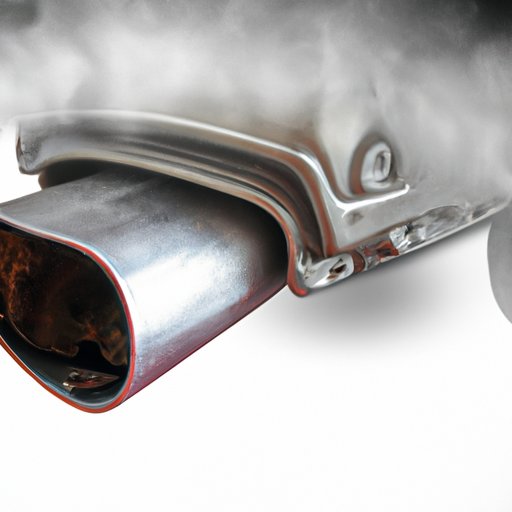
Introduction
Have you ever wondered how long you can drive without a catalytic converter in your vehicle? In this article, we will explore the importance of understanding the role of a catalytic converter in a car or truck. We will also discuss the risks of driving without one and potential alternatives.
What is a Catalytic Converter and Why is it Important?
A catalytic converter is an important component of a vehicle’s exhaust system. It is designed to reduce harmful emissions by transforming them into less harmful gases. These emissions include carbon monoxide, hydrocarbons, and nitrogen oxides.
It works by utilizing a chemical reaction between the gases and a catalyst to convert them into different gases that are less toxic. The catalyst consists of precious metals such as platinum, palladium, and rhodium.
Without a catalytic converter, these harmful gases would be released into the atmosphere, causing air pollution and damaging the environment. Therefore, it is essential for drivers to understand the importance of maintaining a healthy converter.
Signs Your Catalytic Converter May be Failing
There are several signs that may indicate a defective catalytic converter. These signs may include:
- Reduced engine performance or acceleration
- Check Engine light turning on
- Increased emissions or unusual smells
- Rattling sound coming from the undercarriage of the car
If these signs are ignored, they could worsen and lead to costly engine problems. For instance, a failing converter may cause the engine to misfire, lose power and run rough. If left unchecked, it can eventually lead to complete engine failure.
Understanding the Laws
State and federal regulations require vehicles to have catalytic converters. The Environmental Protection Agency (EPA) enforces clean air standards that limit the amount of pollution emitted by vehicles.
Removing or tampering with a catalytic converter is illegal and subject to fines. Additionally, it can cause a reduction in performance, damage to the engine, and potentially harm the environment.
Drivers should be aware of the regulations in their state and understand the consequences of violating them. They should also consult with a mechanic or dealership before making any changes to their emissions system.
How Long Can You Drive Without One?
The length of time a vehicle can be driven without a catalytic converter varies depending on several factors. These factors include:
- The age and make of the vehicle
- The driving style and environment
- Whether the Check Engine light is on
- Whether there is an issue with the oxygen sensor or other related components
In some cases, a vehicle may be able to run without a catalytic converter for a short period. However, this is not recommended and is illegal in many states. Without it, the vehicle will produce toxic emissions, which can harm the environment and the driver’s health.
If a driver continues to drive without a catalytic converter, it can cause severe engine damage and lead to costly repairs. Furthermore, it may significantly reduce the value of the vehicle and potentially result in legal problems.
The Risks of Driving Without a Catalytic Converter
Driving without a catalytic converter can negatively impact various aspects of the driver’s life. These impacts include:
- Reduced engine performance and fuel efficiency
- Exposure to harmful emissions, which can cause a variety of respiratory problems
- Legal consequences, including fines and imprisonment
- Damage to the environment
In addition to these risks, driving without a catalytic converter can lead to long-term engine damage and reduce the value of the vehicle.
Alternatives to Removing Your Catalytic Converter
Drivers who want to improve their vehicle’s performance may be tempted to remove their catalytic converter. However, this is not recommended and is illegal. There are alternative ways to enhance performance without removing the converter.
One such alternative is to install a high-flow catalytic converter. These converters offer less restriction to the flow of exhaust gases, thereby increasing horsepower and torque. They are also designed to reduce emissions and meet regulatory standards.
Tips for Maintaining Your Catalytic Converter
Drivers can take simple steps to maintain the health of their catalytic converter. These steps include:
- Using the correct fuel
- Replacing spark plugs when necessary
- Keeping the engine running efficiently
- Regularly checking and replacing air filters
Regular maintenance can improve the longevity of a catalytic converter and ensure it is functioning correctly. This, in turn, can help to reduce emissions and protect the environment.
Conclusion
Understanding the role of the catalytic converter is crucial for drivers who want to maintain a healthy and efficient vehicle. In this article, we discussed the importance of this component, the signs of a failing converter, regulatory laws, driving risks, and alternatives to removal. As a driver, ensuring compliance with emissions standards is not only essential for regulatory compliance but also important for protecting the environment and human health.





